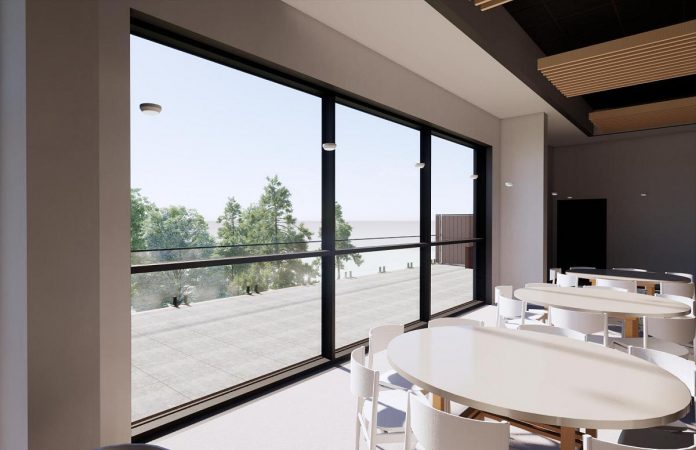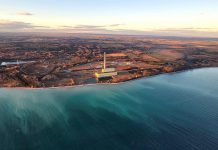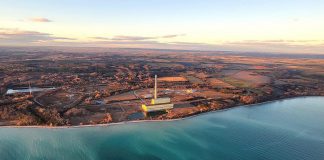
As The Canadian Canoe Museum awaits the completion of its new state-of-the-art facility on the shores of Little Lake and begins the monumental project of relocating its world-class collection of paddled watercraft, it’s becoming clear the new museum will play a vital role in shaping the region’s economic development by increasing tourism as well as supporting local businesses.
After moving into its new 65,000-square-foot waterfront facility at 2077 Ashburnham Drive, not only will The Canadian Canoe Museum affirm its reputation as a premier tourist destination in the region and country, but it will also extend its local reach through educational programming and usable space for the community.
“We’re shifting from just doing cultural tourism — where we’re offering a museum or art gallery experience — to offering recreational tourism as well,” explains the museum’s executive director Carolyn Hyslop.

Tourism is already a major sector influencing the economic growth in the region of Peterborough & the Kawarthas. The new museum and its many additional offerings will only enhance that growth, according to Joe Rees, director of tourism for Peterborough & the Kawarthas Economic Development.
“Our region welcomes more than three million visitors each year who are spending more than $300 million at local visitor-dependent businesses,” Rees explains. “And that number is only going to increase.”
Rees says The Canadian Canoe Museum has been “one of the region’s signature attractions” for over two decades. With the new museum expected to triple its number of visitors to over 80,000 annually, the increased tourism will be a boon for the local economy, with out-of-town visitors projected to spend $5.6 million annually in Peterborough & the Kawarthas.

Currently, 97 per cent of the region’s tourists come from within Ontario, which means there is a huge opportunity for the new museum to attract international visitors — especially with the draw of the canoe as a well-known symbol of Canada.
“As locals, sometimes we don’t really appreciate the fact that the canoe is an icon,” Rees says. “If you talk to people from the UK or France or Australia, you will find that they have their versions of the canoe. Yet, they know of the styles and designs of canoes that have originated uniquely from this area, influenced by the canoe’s Indigenous origins and the local canoe-building industry in the 19th and early 20th centuries, including globally renowned brands like the Peterborough Canoe Company. So, we’re excited about welcoming them.”
With its proximity to the Trans Canada Trail, biking trails, campgrounds, and downtown Peterborough, the museum’s new location will be easily accessible to both local and out-of-town visitors travelling by car or via active transportation. Tourists will easily be able to plan their visits to include stops at other core attractions like the Peterborough Lift Lock and Trent-Severn Waterway (both national historic sites), as well as the Peterborough Museum and Archives and local businesses and restaurants in East City.

“We’ve all witnessed the growth and redevelopment that’s been happening in East City over the last few years — it’s become a bit of a destination on its own,” notes Rees, adding that he’s beginning to see the commercial development that typically follows the significant amount of residential investment. “The new museum enhances an attraction corridor in Peterborough and ways to connect East City through the lake to the downtown.”
With a new waterfront location, for the first time in its history, The Canadian Canoe Museum will be able to offer all of its on-the-water programming from one convenient location. This will see the return of guided paddling experiences, and skills and certification courses, alongside new offerings, including canoe and kayak rentals.
For example, an interpretive, 90-minute Voyageur canoe tour will have guests paddle a 25-to-36-foot canoe along Little Lake while a knowledgeable guide shares enthralling stories, songs, and natural history and facts about Peterborough, the surrounding area, the fur trade era, and its watercraft.

“We know that people are looking for an experience,” says Rees, adding that the on-the-water programming caters to Peterborough & the Kawarthas Tourism’s key market demographics.
The new facility will also allow The Canadian Canoe Museum to invite more local and visiting school groups for transformative learning experiences. Previously, the museum would host an annual 5,000 visiting students for field trips. At the new location, the museum will be able to host field trips both inside the museum and on the lakefront campus, enabling the museum to host more students than ever before.
“Students can go out on the water and on the campus to experience nature-based education right from the outdoor campus at The Canadian Canoe Museum,” Hyslop explains. “Then we can tie it authentically back to education that involves the canoes and the kayaks in our collection. It’s a perfect blend of indoor and outdoor programming.”

Rees points out food and beverage is another key factor in creating tourist-friendly spaces. Peterborough’s popular Silver Bean Café, located in Millennium Park on the shores of the Otonabee River, will be the café operator at the new museum, opening its second location. With ample seating inside the museum’s café lounge and outside on the terrace, both locals and tourists will be attracted to visit the museum all year round.
“For those who may not be interested in getting on the water or even going to the museum, they can just come and enjoy beautiful coffee with a lovely scone from the folks at the Silver Bean Café or a nice glass of wine or local beer,” says Hyslop. “The synergy between experiences in a museum setting, tied with a recreational experience and food and drink, is a really nice blending of opportunity we’re presenting.”
The museum’s café, which will seat 30 people inside and 32 outside, will boast a menu of light lunches, breakfasts made fresh-to-order, desserts baked in-house, and locally roasted coffees. Guests can order Kawartha Dairy ice cream in the summer, comfort foods in the winter, and alcohol year-round during the museum’s hours of operation.
Also available year-round, the museum will have rental space available to the community for weddings, galas, parties, and corporate and other events. The space seats 160 people in banquet style, 190 people in theatre style, and spills out onto a spacious second-storey terrace overlooking the water.

“One of the biggest opportunities for tourism-related business development is meetings, conferences, and group travel,” explains Rees. “The new Canadian Canoe Museum facilities are going to offer a unique experience and one that meets the needs of a number of in-demand organizations and events.”
Not only does this type of venue fill a gap in the region, but those using the space will be supporting local businesses.
“Clients will be able to hire their own local catering from the excellent food industry that exists in Peterborough,” Hyslop says. “All of the other industries that go into supporting events will be pulled in as well.”

The museum has already been enlisting support from several local organizations and businesses since first beginning to plan the expansion. In addition to financially supporting the campaign, local designers, consultants, builders, and suppliers are involved with the construction of the new facility.
“This capital infrastructure project is significant for the local community, and there are many local and regional trades and suppliers bringing this museum to life and fuelling the labour market here in town,” explains Hyslop. “And that spins off to all the other industries supporting the folks working directly on The Canadian Canoe Museum.”
“This is a massive construction project primarily with local contractors, many of whom have put money back into the construction themselves,” Rees adds. “It really is great from a circular economy perspective, with the economy and businesses supporting each other while giving us this beautiful new attraction in the region, as well as vital tourism infrastructure to continue to grow Peterborough & the Kawarthas as a destination.”

While Rees and Hyslop are eager to see the museum re-open at its new location to further elevate Peterborough & the Kawarthas as a visitor destination, they also believe the new museum will encourage further development within the community.
“I hope this is a real catalyst for a lot of other cultural, tourism, and recreation projects to take place in the area,” she explains. “And that this raises momentum and people’s awareness about Peterborough & the Kawarthas as such a beautiful region.”
The Canadian Canoe Museum recently launched a new fundraising campaign as it prepares to move the world’s largest and most significant collection of paddled watercraft, alongside small artifacts, archives, and a library to its new waterfront home.
VIDEO: Move the Collection: The Final Portage: Passing The Silver Bean Café
The “Move the Collection: The Final Portage” campaign is being led by avid paddling enthusiasts and local community leaders Mike Judson and Neil Morton.
This summer and fall, the museum is releasing a series of videos and behind-the-scenes content featuring Judson and Morton portaging a symbolic canoe from the current museum to the new museum, past recognizable landmarks and local tourist destinations in Peterborough, allowing the public to follow the fundraising campaign’s progress while building excitement for the museum’s reopening.
Canadians from across the country and beyond who want to support the final portage of The Canadian Canoe Museum’s collection to its new home at the water’s edge can make a donation at canoemuseum.ca/final-portage.

For more information about the new museum, visit canoemuseum.ca/new-museum.
Follow The Canadian Canoe Museum on Instagram and Facebook or subscribe to their newsletter for updates.
kawarthaNOW is proud to be the official media sponsor of The Canadian Canoe Museum’s Move the Collection: The Final Portage Campaign.


























